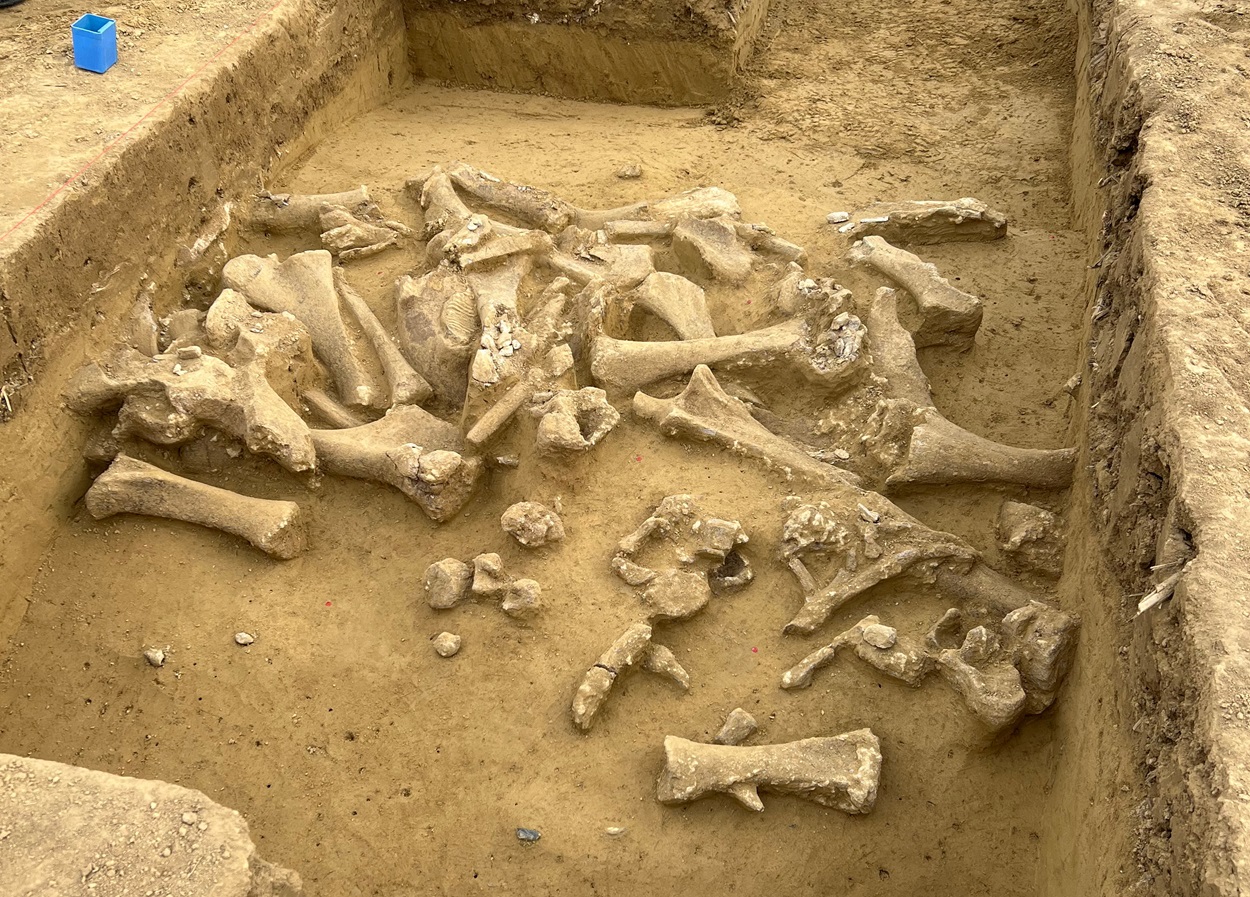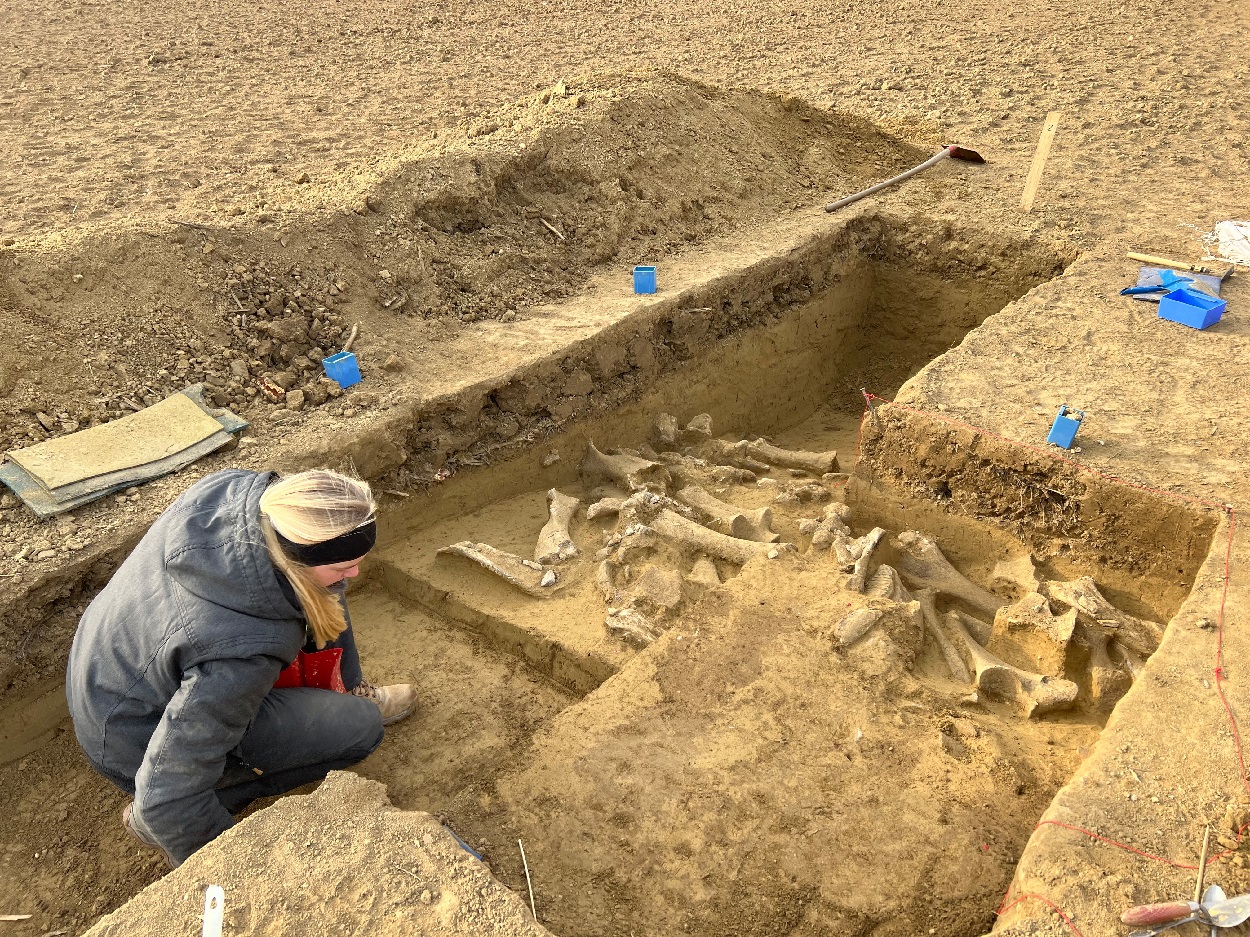Archaeologists from the Austrian Academy of Sciences (ÖAW) have uncovered the remains of at least five mammoths during excavations in Langmannersdorf an der Perschling, located in the Austrian state of Lower Austria.
The Langmannersdorf site was first identified in the early 20th century, where excavations discovered two hunting encampments and accumulations of mammoth deposits from 25,000-years-ago.
During this period, herds of mammoths roamed Central Europe and used the Perschling Valley as a migration route and grazing area.
In a recent study, archaeologists discovered two additional mammoth bone accumulations just 15 metres apart, containing the skeletal remains of at least five mammoths, along with stone tools and dismembered tusks.
One accumulation shows evidence of butchering in at least two mammoths, while the other accumulation has the remains of at least three mammoths, as well as intact and dismembered tusks from ivory processing for crafting tools such as ivory spearheads. This suggests that prehistoric hunters not only consumed the meat but also processed ivory on-site.

Through DNA analysis, stable isotope studies, radiometric dating, and paleodemographic modelling, experts have been able to reconstruct the environment and human activity of the time, offering a rare glimpse into life before the peak of the last Ice Age.
“The fact that we found not just individual bones here but intensively used areas in which several animals were processed, has more than exceeded our expectations,” explains Marc Händel of the Austrian Archaeological Institute of the Austrian Academy of Sciences. The new discoveries provide valuable insights into the hunting and lifestyles of people of this period.
The excavations in Langmannersdorf are part of the European research project MAMBA (“Exploring Mammoth Bone Accumulations in Central Europe”).
Header Image Credit : ÖAW-ÖAI/Marc Händel
Sources : ÖAW







